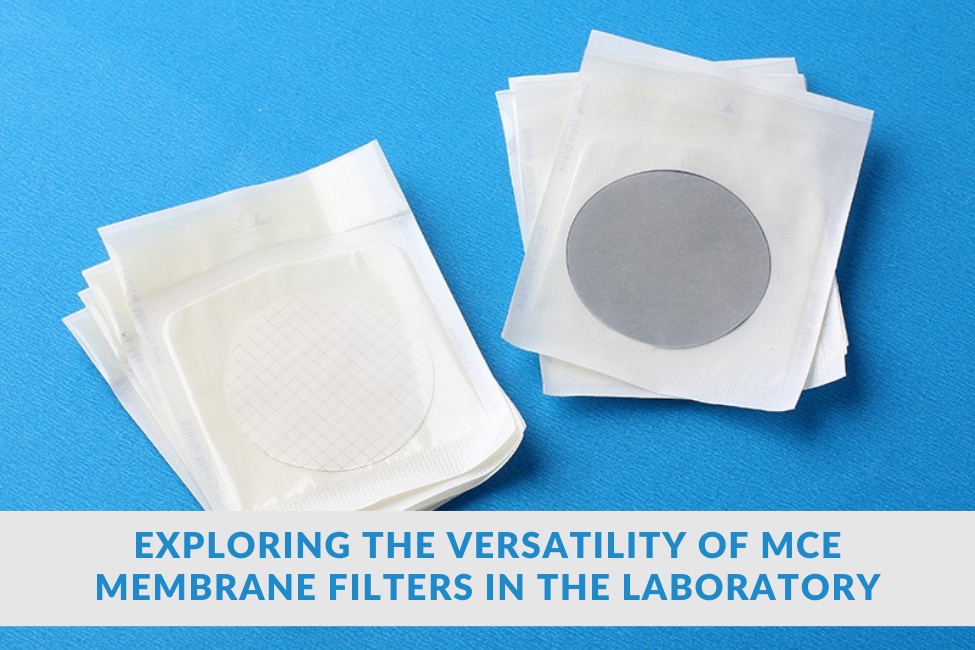In the ever-evolving world of scientific research, laboratory equipment and techniques play a crucial role in the success of experiments and studies. When it comes to sample preparation and filtration, researchers rely on the accuracy and reliability of membrane filters. Among the various types of membrane filters available in the market, MCE (mixed cellulose ester) filters have stood the test of time and have a reputation for their versatility and effectiveness. In this blog, we will delve into the world of MCE membrane filter and explore their various applications in the laboratory.
What are MCE membrane filters?
MCE membrane filters, also known as mixed cellulose ester filters, are made of a mixture of cellulose nitrate and cellulose acetate. They are often used as membrane filters for analytical separations and sterilization due to their high protein binding capacity and low non-specific adsorption properties.
Versatility of MCE membrane filters:
One of the primary reasons for the popularity of MCE membrane filters is their versatility. Let's take a closer look at the various applications of these filters in the laboratory.
1. Filtration and clarification of biological and environmental samples:
MCE membrane filters are commonly used for filtration and clarification of biological and environmental samples such as water, air, tissue culture media, and food samples. These filters have a pore size range of 0.22μm to 5.0μm, making them ideal for removing bacteria, fungi, and other microorganisms present in the samples. They are also resistant to most chemicals and solvents, making them suitable for a wide range of applications.
2. Microbial analysis and enumeration:
In microbiology and environmental studies, MCE membrane filters are extensively used for the enumeration and analysis of different microorganisms. These filters are available in a range of pore sizes, enabling researchers to capture and grow different types of microorganisms on the surface of the filter. The filter can then be transferred onto culture media, allowing researchers to accurately identify and quantify the microorganisms present in the sample.
3. Protein detection and purification:
MCE membrane filters are highly suitable for the detection and purification of proteins in biological samples. Their high protein binding capacity and low non-specific adsorption properties ensure minimal protein loss during filtration, allowing researchers to obtain high-quality data. MCE filters are commonly used in techniques such as ELISA and Western blotting, where they act as a solid support for the immobilization of proteins.
4. HPLC sample preparation:
In High-Performance Liquid Chromatography (HPLC), sample preparation is a crucial step that requires the removal of impurities and particles that can affect the accuracy of results. MCE membrane filters are widely used for this purpose due to their low extractables and low protein binding properties. They are also compatible with a variety of solvents, making them an excellent choice for HPLC sample preparation.
5. Sterilization and clarification of media for cell cultures:
In cell culture applications, the quality and sterility of the culture media are of utmost importance. MCE membrane filters are often used for sterilizing and clarifying media to remove any bacteria, fungi, or particles that may affect the growth of cells. These filters are compatible with both aqueous and organic solutions and can withstand autoclaving, making them an essential tool in cell culture laboratories.
Advantages of using MCE membrane filters:
1. Low extractables and minimal protein binding:
MCE membrane filters have low levels of extractables, which means that they do not release any harmful chemical substances into the samples during filtration. They also have minimal protein binding, ensuring that there is no loss of proteins during the filtration process.
2. High flow rates:
Due to their mixed cellulose ester composition, MCE membrane filters have a smooth surface that allows for high flow rates during filtration. This makes them ideal for filtering large volumes of samples in a short amount of time.
3. Compatibility with a wide range of solvents:
MCE membrane filters are versatile and can withstand a variety of solvents, including both aqueous and organic solutions. This makes them suitable for a wide range of applications in the laboratory.
4. Autoclavable:
Unlike some other types of membrane filters, MCE filters can withstand high temperatures and are therefore autoclavable. This makes them reusable and cost-effective for laboratory use.
5. Cost-effective:
Compared to other types of membrane filters, MCE filters are relatively inexpensive, making them a cost-effective option for routine laboratory use.
Conclusion:
In conclusion, MCE membrane filters are a versatile and cost-effective option for various applications in the laboratory. Their high flow rates, low extractables, and minimal protein binding properties make them ideal for sample preparation, protein detection, and purification, HPLC sample preparation, and sterilization. Moreover, their compatibility with a wide range of solvents and autoclavability adds to their value in the laboratory. The next time you are in need of membrane filter, consider using MCE filters and experience their versatility and efficiency first-hand.


No comments yet